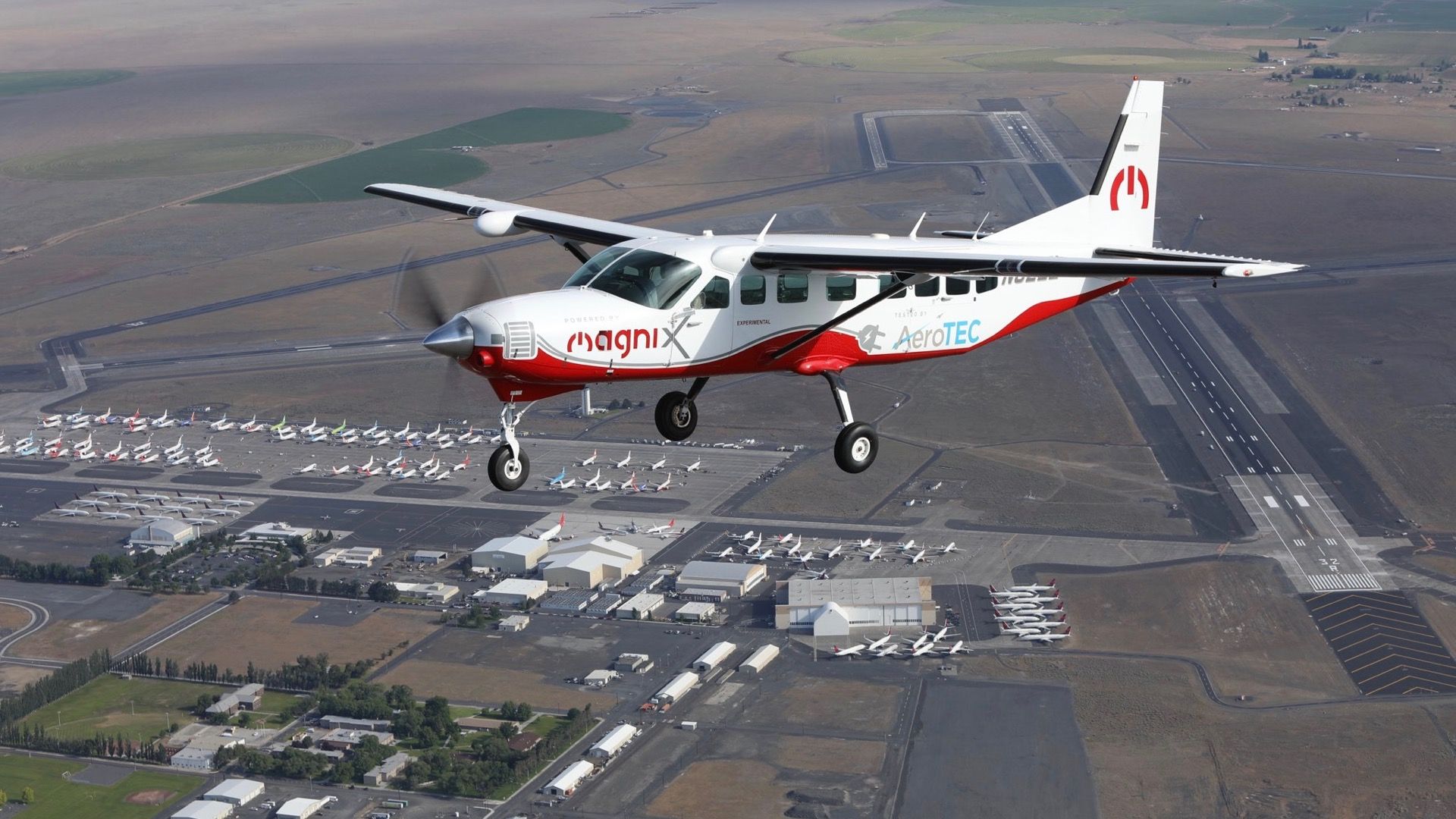
🛩️ Successful test flight of the world's largest all-electric plane
A new milestone in low-cost zero-emission air travel.
Share this story!
Last month saw a new milestone in low-cost zero-emission air travel. The Seattle-based company Magnix – a manufacturer of electric motors – successfully conducted a test flight with the largest fully electric airplane to date.
Together with the airline Harbour Air, Magnix has replaced the motor of a Cessna Grand Caravan 208 airplane with a zero-emission motor of 750hp. The plane made a successful test flight on Thursday the 28th of May, making it the largest fully electric airplane so far to successfully fly. The airplane was up in the air for approximately 30 minutes and then made a successful landing. Magnix live-streamed the full event on Twitter.
The Cessna Grand Caravan 208 is a popular plane type used for commuter traffic over shorter distances. A freight variant is also frequently used for cargo air traffic. Originally designed in the 1980s, the nine-passenger plane is still widely used today, with over 20 million logged flight hours according to Wikipedia.
Magnix states on their website that they envision a world with high-power-density electric motors powering airplanes, making air traffic cleaner and greener but also cost-effective for different air traffic stakeholders.
In an interview with Techxplore, Magnix’s CEO Roei Ganzarski, said that the removal of the fuel engines and the introduction of electric replacement will decrease the need for maintenance, cutting operation costs by as much as 80%, which in turn would mean lower ticket prices and incentivize new routes for small- and medium-range air traffic.
Electric airplanes are high up on the list of future technologies that will cut the emissions from air traffic, at least for shorter distances, like domestic air traffic in European countries, for example. Like electric cars, they also make less noise than their fuel engine counterparts. The noise reduction is good for the ecosystems in areas where flights cross, because birds will be less disturbed.
The successful test flight does not yet mean that Magnix can start to fly passengers, however. The electrical engine will first need the required certification, which in the United States is given by the Federal Aviation Administration.